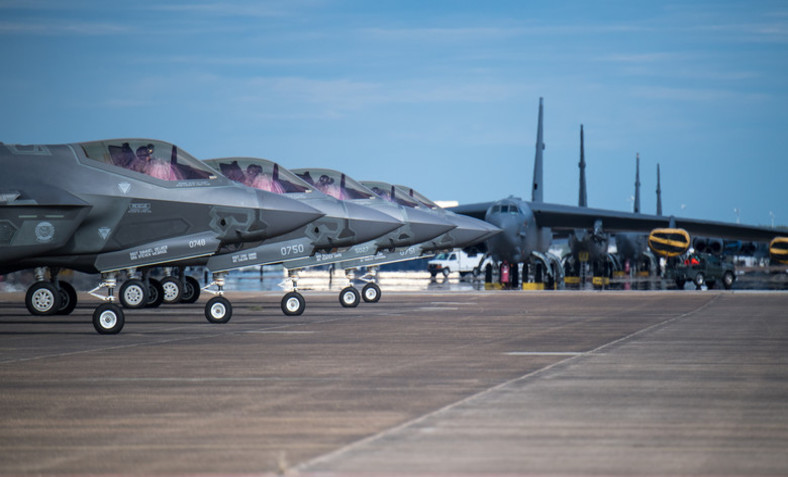 F-35 Lightning aircraft from Eglin Air Force Base prepare for takeoff at Barksdale AFB, October 2018. Photo: US Air Force/Lillian Miller
F-35 Lightning aircraft from Eglin Air Force Base prepare for takeoff at Barksdale AFB, October 2018. Photo: US Air Force/Lillian Miller
The fight against ecological disaster must include fighting the war machine of the US state, argues Jago
The US military machine knows no bounds regarding world degradation, however much – through its excessive consumption of raw materials and production of countless major oil and pipeline spills – it is now considered to be the world’s biggest industrial polluter.
The US Department of Defence is responsible for huge amounts of devastation to the environment; its use of pollutants such as perchlorate and jet fuels heavily contaminate 19 million acres of occupied land, disrupting local ecologies and toxifying local water sources.
The $600 trillion industry produces more hazardous waste than the five largest US chemical companies combined. Its bases often fall under the need for further state investment by the US Environmental Protection Agency (EPA) for ‘super fund’ cleaning programmes. The former US congressman John D. Dingell said, “Almost every military site in this country is seriously contaminated”. The chemical carcinogens used have been one of the most prominent formations of water pollution.
Bikini Atoll, being the site of 23 nuclear tests off the island of Okinawa in the Pacific Ocean, has also experienced extremely high levels of water intoxication. The unprecedented degree of radiation has caused serious illness and cancer among local residents. The Marshall Islands has suffered from more than 60 nuclear weapons tests during the cold war, causing unprecedented damage to local communities and wildlife.
American nuclear testing is one of humanity’s most environmentally destructive acts, where the effects of radiation and nuclear waste will raise multifarious new challenges.
Richard Turco of the American Geophysical Union claimed in 2006 that detonating just 0.03% of the world’s nuclear arsenal would throw record levels of soot into the earth’s atmosphere, forming ‘climatic anomalies’ unknown to human history.
With the US’s continual growth of its nuclear arsenal and growing global uncertainties, nuclear weaponry could cause an unprecedented contribution to climate chaos.
Iraq has also suffered from extreme levels of environmental damage and pollution from the 2003 US-led intervention: around 90% of its land has experienced desertification, leading to the country needing to import over 80% of its food. Inevitably, the US military needed methods of waste disposal, so it instituted the policy of ‘open-air burn pits’, which caused air pollution which has led to increased rates of cancer among the people of Iraq.
The US’s excessive need for war, intervention and global military presence has led to the continual dumping heavy metals, explosives and military equipment into the world’s oceans. The environment processes named ‘stressors’ have already seen thousands of toxic materials being dumped off the coasts of US-held territory.
US military officials have continually denied the environmental damage its forces have caused to the world. However, studies suggest the global harm of US imperialism now extends to international ecology, showing that a united movement against climate change should also include the fight against America’s military might.

